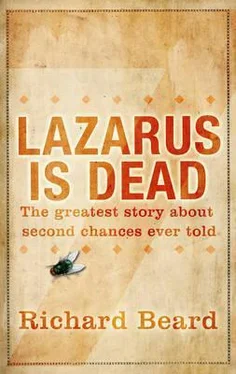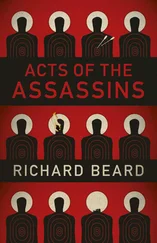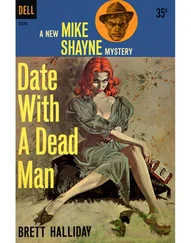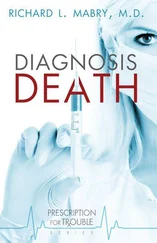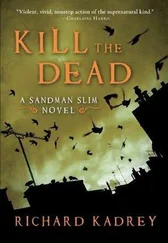Lazarus studies the long trestle table covered in a white cloth. He sticks breadcrumbs to the pads of his fingers, brushes them off and picks up a cup from the centre of the table. He peers inside. It is empty, apart from an intact fly wing in a dreg of wine. He puts the cup back down. He could be happy, if he knew what he was hoping to find.
‘What now?’ Lydia asks.
‘We wait,’ Lazarus says. ‘We have to trust, if he’s the man you think he is, that our warning will reach him in time.’
They sit down at the table, and unusually all of them are on the same side. No one feels comfortable. They stand up. Cassius hopes Lazarus is taking in the banality of the surroundings. Nothing special. Martha stacks plates.
Some time later Lazarus is sitting on the floor, his back against the wall between two of the hanging drapes. Lydia is beside him, sitting close because the space is narrow. He assumes he knows what she wants.
‘There is something,’ he says, is the most he feels he can offer. ‘There is not nothing.’
The outside of her thigh touches his.
Lazarus starts again. ‘If I could explain it, I would. It’s like you can see everything, but it isn’t seeing. Everything that has happened and everything that will happen is utterly there, but there’s no there or then and nothing is happening. I think it’s shapeless and colourless, because no shapes or colours fit what I remember about death. Although death isn’t the right word. If I try to define it I end up describing here.’
He gestures around the upstairs room at the inn. ‘It’s not like here at all.’
Dying is easy. Anyone can do it. Living is the problem — Lazarus has been brought back to life and he can’t explain himself. Luigi Pirandello ( Lazarus , 1927) therefore concludes that he has nothing to say:
Dead!..And he doesn’t know a thing about it! Where’s he been? He ought to know… And he doesn’t! If he doesn’t know he’s been dead, that’s a sure sign that when we die, there’s nothing on the other side… Nothing at all.
Khalil Gibran reaches a different conclusion. True nothing, by its very nature, would annihilate everything inside it. He admits that Lazarus is ‘silent, silent as if the seal of death is yet upon his lips’, but the man has been dead and is now alive and Gibran can only suppose, in all honesty, ‘there is something else’. Or as Eugene O’Neill exults in Lazarus Laughed : ‘there is no death’.
What else can Lazarus say, after dying and coming back? This is what he knows as a certainty: ‘There is something beyond.’
Lydia looks at him blankly. ‘That’s not what I was going to ask.’
5
Lazarus falls asleep, despite the imminence of significant theological events. He is not alone. That same night, the apostle John has slept at the table in The Last Supper (1447) by Andrea del Castagno, whose image predates that of da Vinci. In Gethsemane, the disciples Peter and James will fall asleep three times while Jesus is ‘ deeply grieved, even to death ’ (Matthew 26: 38).
Sleep is a gift offered to anyone involved with Jesus at this time. Lazarus and the disciples sleep while they can, because the season of miracles is about to end.
Meanwhile, there is no evidence of a single person dying in Jerusalem between the resurrection of Lazarus and the death of Jesus. For one week the city holds its breath, and the gateway between this world and the next goes unfrequented.
By the early hours of Friday morning, however, the influence of the raising of Lazarus is fading. The gateway is about to open again, and the signal for this to happen is a betrayal in Gethsemane by a disciple for money. There will be a kiss, an ear sliced off in anger, an arrest. An unjust trial, a death. Life on earth resumes.
Lazarus startles awake. He senses a change, but Jesus is not back and he settles beside Lydia and sleeps again, dreaming of escapes across the desert. Sleep is gifted most powerfully to Lazarus; he is a friend and he has suffered and he still has much to do.
We have to imagine, given the context, an immense organisational project. Everything is connected.
In the desert, many years earlier as Joseph’s cart creaked uneasily towards Egypt, the future was written. The return from Egypt, the childhood in Nazareth, the death of Amos, the break with Jesus, the resettlement with his sisters in Bethany.
At a nothing wedding in Cana, Jesus turns water into wine. Half a lifetime away, Lazarus develops a headache.
The son of god has to learn his mortality. This is the purpose of Jesus’s childhood, which introduces him through Lazarus to risk and ambition. Jesus unravels from perfection as Lazarus his friend teaches him everything he needs to know. Lazarus leads the retreat from omniscience, always going first, demonstrating the ignorance of the human condition.
Eliakim the father of Lazarus falls from the roof of the theatre in Sephoris. Lazarus doesn’t learn. He climbs an even higher building, in the rain.
Lazarus teaches Jesus how to grieve, when Amos dies. Lazarus weeps and hacks away his hair and shaves, while Jesus learns from him fear and unhappiness, vanity and denial, anger and self-pity and every mortal folly.
From Lazarus Jesus learns how to weep, and at the tomb of Lazarus he weeps.
If Lazarus doubts the existence of god, it is because someone has to show Jesus how. Jesus tries it too, during his forty days alone in the desert, and finds doubt to be a horribly authentic human experience. He doesn’t want anyone else to feel that way — it is the doubt that he has been sent to eradicate.
Jesus brings Lazarus back to life and people see and should now believe and thus the end of the story. But not even Lazarus believes, not completely. With hindsight a resurrection is so obviously not the end, just as Jesus foretells in the parable of ‘Lazarus’ and the rich man refused his entry into heaven.
Not that the experience of Lazarus is ever wasted — he has taught his friend how to die.
Human death involves resistance. Jesus must suffer. He must want not to perish.
*
Jesus is arrested by Temple guards and taken to the house of Caiaphas, where he is tried by the Sanhedrin priests for blasphemy, and found guilty. He is bound and transferred to the Praetorium, in the former palace of Herod the Great. This is life on earth reactivating after the miracle of Lazarus, as Jesus wishes to experience it.
In Mel Gibson’s The Passion of the Christ (2004), his face is already bleeding when he stands accused before Caiaphas. He has a deep cut on his cheek in the shape of a fingernail, and his right eye is swollen and closed from a welt administered somewhere along the path from Gethsemane. A thick lower lip smudges his voice as he speaks through mouthfuls of blood.
Priests knock him down. He gets back up. They spit between his eyes, into his nose. Temple guards beat him with short sticks, taking slices out of his forehead, and they hang him from a roof-beam by chains.
Then they hand him over to the Romans, who punish him for alleged sedition. In an outside courtyard, Jesus is chained to the base of a column. Two soldiers select canes with the correct amount of bend, as they would for anyone who threatened a popular uprising. They each in turn take a two-step run-up and lash Jesus forehand, backhand, forehand. They start with his back and buttocks, then move on to the backs of his thighs. Then his face. They open up wounds and then cane the open wounds.
The flagellum . In The Passion of the Christ the strands of leather have scraps of iron tied to the ends. The iron clutches into the muscle, and at each lash the whip has to be ripped clear of the body, pulling with it a scatter of flesh. The soldiers strike crossways and lengthways. They exhaust themselves and flail at his head.
Читать дальше
